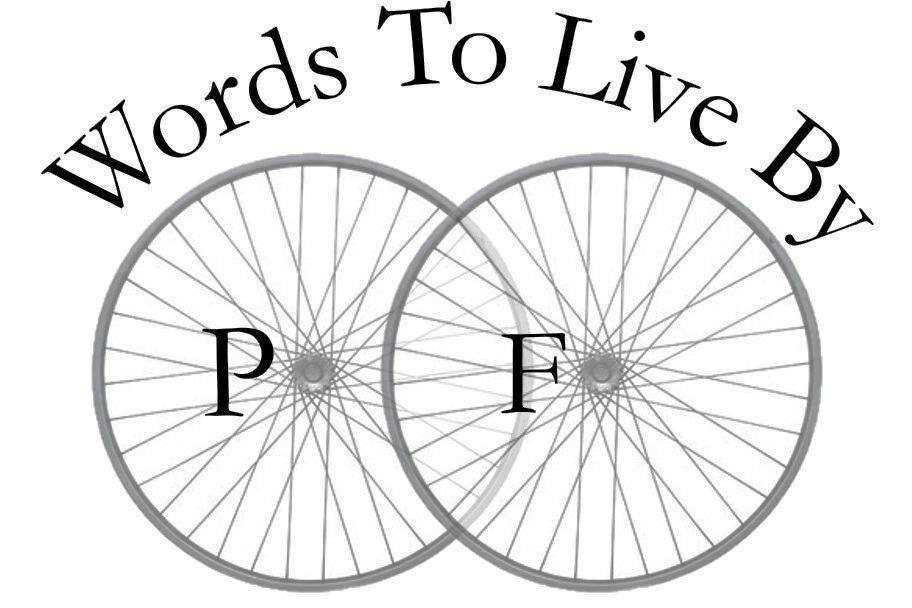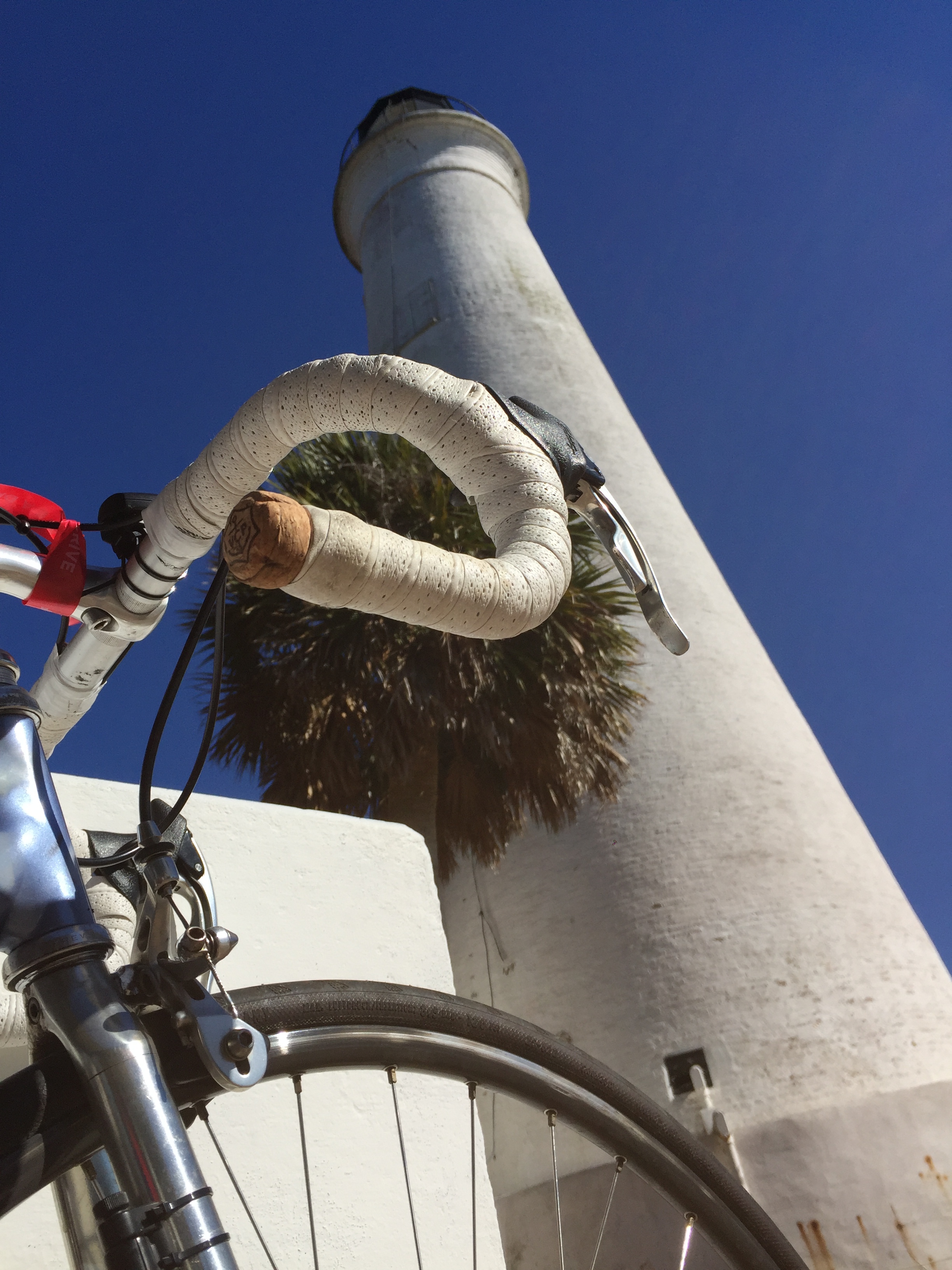Cloud Bike
Days like Saturday make me question this project.
Eleven miles out from Havana, Florida, I leaned over the turn onto Swamp Creek Road in Calvary, Georgia, counter steered with power through and out of the corner. My Cloud Bike was solid, silent and stylin’ as I pulled forward with the wind now at my back. Here was a new route on unknown roads and featuring new towns and landscapes. This is cycling to me. Heading out along the county roads that are essentially elaborate bike paths cars are allowed to use, pulling a turn-by-turn cue sheet from a jersey pocket or out from a shorts leg. Along the way I’d pass pine stands and pecan groves and tobacco fields and played-out dirt farms. There were dissolute fencerows and acrid pasture burns and thrumming wellheads pumping to fill a new pond. On this sunlit gift of a day in February, right here on Swamp Creek there was the embodiment of hope: Black baldy beef cattle munched among mature pecan trees interspersed with pecan saplings fenced-away from browsing lips and teeth. It takes a lot of imagination, a lot of faith, to plant a tree you will likely never see bear fruit.
A bicycle’s greatest virtue on this day is not light weight nor cool paint job nor Italian components but rather dependability. Not a stolid certainty, it’s true, but bulletproof excellence. This the Cloud Bike has in full and thus I can roll through the countryside with confidence.
This new bicycle has big tires to fill.
Beneath the cumulus and sky of the Cloud Bike is a white 1988 Cannondale, the brand name rendered in elongated blue block, aggressively lower-case letters.
(This post is looking backward, providing the backstory of the Cloud Bike and how it affects my approach to Hugo Black. Once this is out of the way we’ll be going forward with the build. Thank you for your patience.)
I drove into Springfield from West Plains in 1994, a one-way trip of 116 miles, to purchase a road bike. I don’t have a record of it, but memory tells me I paid $340, but my recall could be faulty. Such a sum strikes me as princely, and it certainly would have done back then in the first Clinton Administration, even as I now dole out a similar sum for a crankset and bottom bracket alone. The seller lived in a duplex up by the public golf course along Interstate 44. I’m pretty sure it was not stolen. I rode that Cannondale as it came in my first century on the initial day of that fall’s version of the MS 150, Springfield to Lebanon, chop-shop capital of Missouri.
The bicycle must have been listed for sale in a classified advertisement in the Springfield News-Leader or the Penny Power free weekly shopper. These publications, these names and phrases, these business models seem impossibly quaint now. It sounds to my own ears like a description of the Gutenberg press or a how-to drawing for opening a ‘70s Coors push-tab can; strictly of its time and a stark anachronism now.
It shows how much has changed. I won’t go through the Old Man’s Laundry List of how it Yousta Bee. Here’s the deal, though. However much has changed in the broader world, the bicycle has not.
Two wheels, one in train behind the other. Cranks. Mechanical advantage provided by gears connected with a chain. There you have it. After halting starts with the velocipede and penny-farthing we have had the basic modern bicycle in place for more than 120 years. The differences between my Cloud Bike and Hugo Black are the same kind of changes experienced for more than a century – reflecting advances in materials and technical refinements, not disruptive changes to the underlying idea of “bicycle.”
I’m reading a terrific book about Gino Bartali. The bicycles he rode to Tour de France victories in 1938 and 1948 both would be quite familiar to riders six decades and more hence. Pneumatic tires, a drivetrain with multiple sprockets changed by means of a derailleur, caliper rim brakes. Versions of these were rudimentary, heavy and unreliable by modern standards, but working on the very same principles still in play.
It’s very little indeed that has changed in the years between my Cloud Bike with its aluminum Athena components and the carbon fiber Chorus and Record parts that will outfit Hugo Black. There are 36 percent more gears in the rear sprocket. I look forward to weighing the whole, riding bike – water bottles, tool bag, pedals, the whole shebang as it’s actually ridden on the scale – to compare.
None of that stuff mattered when I built the Cloud Bike. None of it makes a difference to me with Hugo Black.
The Cloud Bike is about beauty. It’s about design serving function. It’s about form and utility finding their highest purposes together.
I stripped the Cannondale of its parts and delivered the bare frameset to a friend who owned an autobody shop. Another friend, his wife, was a graphic designer and artist. Randy at Austin’s Body Shop put a beautiful sky blue coat on the bicycle. I tried to pay Randy. He said I could not afford his services. Jeanne airbrushed the clouds expertly and beautifully. It was exactly what I wanted, precisely as I had envisioned it. (And therein begins a tale. An entirely different tale ensues, but to this point in the narrative and for these purposes this is all true, complete and sufficient.)
The Italian parts arrived. I had a work bench in the garage and some bicycle-specific tools, but nothing extensive. I was aware I didn’t know precisely what I was doing, but I was confident (the confidence of the mediocre white male we’ve all come to see is so dangerous) in my ability to figure it out. I also had a generous view of my margin for error.
I did not, for instance, feel the need to face the bottom bracket or headtube. It’s an operation that requires specific, expensive, single-purpose tools. Material – aluminum in the case of the Cannondale frame – is removed to insure the surface of the two sides of the frame are precisely parallel. I judged that unnecessary. This proved a good bet, but it was anything but assured.
I did not build the wheels. I’ve built wheels, but not these. Plenty came together, it seems to me now, by happenstance, by accident. The steerer on the fork was the right length and right threading for the Campy headset. I know I studied meticulously all the compatibility variations, or thought I did. It’s very hard for me to believe I got it right in a pre-internet age. The sheer number of possible combinations are too great for me to have gotten everything to work either by design or by chance. It’s got to be one or the other. Maybe both?
I installed the bottom bracket and cranks – more variables I managed somehow to get right – setting the bearing cups, packing the bearings in waterproof grease, threading the steel axle through and dialing in adjustable cups to perfection. You’ve got to lever it down to just the free-wheeling side of no lateral play. But not a quarter turn more. The bearings can’t bind. It’s a matter of touch.
Then the cranks get screwed down onto the threaded axle. I’d put my weight over those wrenches, muscling it with all I had on the misbegotten theory that tight is good, tighter is better. This approach would be disastrous with Hugo Black, its carbon frame and its carbon components. Tolerances are slim and a too-tight bolt, beyond spec, can easily crack the frame – a costly mistake.
Back then with the aluminum Cloud Bike, though, derailleurs, cables, handlebars and shifters all got bolted, strung, installed and inserted and everywhere there was a bolt or a nut it was tightened as much as I could muster. Remarkably, it all worked. The gearing I’d fretted over – each of the eight sprockets could be specified, starting at 11 or 13 and moving through to 25. Wrong choices were not available as a combination, so there was some self-protection offered by the Campy folks. The short-cage rear derailleur would be able to accommodate every possible combo, by design. There were 53 teeth on the big chain ring with 25 on the top end of the sprockets. The rear cassette didn’t have a 27-tooth option. It wouldn’t have worked.
Now, 21 years later, the longevity and quality, dependability and sweetness of the Campy is beyond doubt. And I hedge.
It’s strategic. I want to manage expectations – my own. I don’t want to burden Hugo Black with insurmountable standards amplified by nostalgia. And then, I think I’m projecting hope, not wanting this bicycle I’m putting together to surpass the Cloud Bike because it’s newer, because it’s more expensive.
There’s only one way to find out. Let’s go for a ride.





